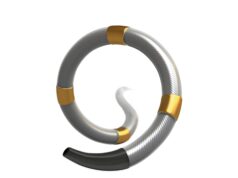Although renal denervation may not hit the heights originally envisaged for it in the management of hypertension, and areas of uncertainty remain, Partha Sardar and Herb Aronow explain why they believe that it has the potential become a mainstream therapy.
Renal sympathetic denervation (RSD) is being actively investigated as a novel treatment modality for patients with hypertension (HTN). Earlier prospective cohort and first generation randomised controlled studies demonstrated that RSD was safe but associated with variable impact on blood pressure.1–3 Most notable among these was the randomised sham controlled SYMPLICITY HTN-3 trial which failed to meet its primary efficacy endpoint and caught many experts in the field off guard.3
A number of potential explanations for the lack of observed benefit were proposed, including inexperienced operators, suboptimal patient selection, incomplete denervation with early catheter designs and ablation techniques, inappropriate endpoint selection and variation in concomitant antihypertensive agent use.2,4 As a result, second generation trials were designed to address many of these earlier trial limitations. Design changes included selection of operators who had participated in prior RSD trials, inclusion of patients with less severe HTN who were on or off antihypertensive medications—most of whom had combined systolic/diastolic HTN—use of ablation catheters constructed to provide more comprehensive, four-quadrant renal nerve ablation, ablation of both main and accessory renal arteries including larger secondary branches, and selection of ambulatory rather than office blood pressure as the primary efficacy endpoint.
These second-generation RSD trials have yielded more modest, yet consistently significant, blood pressure lowering, with single- as opposed to double-digit blood pressure reduction.2,4 The second generation RADIANCE-HTN and SPYRAL trials injected new optimism into the field when they demonstrated significant blood pressure reduction following RSD with either radiofrequency or ultrasound energy and in patients who were both on and off of antihypertensive medications.1,2 In our recent meta-analysis,2 which included six first- and second-generation randomised trials and 977 patients, the reduction in 24-hour ambulatory systolic blood pressure (ASBP) was 3.7mmHg greater with RSD than with sham procedure. Likewise, daytime ambulatory systolic blood pressure (ASBP), office systolic BP and office and ambulatory measures of diastolic BP were also lowered significantly more with RSD. Notably, the reduction in daytime ASBP was significantly greater in the three second-generation trials included in the analysis (6.1mmHg more than sham) than in first-generation studies (2.1mmHg). These second-generation trials required that procedures be performed by experienced operators only, excluded patients with isolated systolic HTN, used advanced catheters and ablation techniques, modified medical therapy to better assess for treatment effect, and used 24-hour ambulatory blood pressure as the primary endpoint.
Recent data, including those from our meta-analysis, suggest that the blood pressure lowering effect of RSD, even if smaller than initially anticipated, is similar to that observed with many currently approved antihypertensive drugs, and of a magnitude that should translate into significantly lower cardiovascular event risk. Furthermore, a single intervention with lasting impact on a condition as ubiquitous as HTN would be a tremendous advance. Nevertheless, many questions remain about RSD, including its long-term safety and effectiveness, and how it might be integrated into the treatment armamentarium for HTN.
Whether it will replace or augment medication regimens, and whether it will become an elective procedure for those who are less adherent or prefer not to take medications, remains to be seen.5 There will also be a need to carefully define which patients are most likely to respond to RSD and for tests to establish the success of RSD, including real-time operator feedback during the procedure.2,5 Despite these many uncertainties, we believe that RSD is poised to become a mainstream therapy, offering hope for many of today’s hypertensive patients.
References
- Kjeldsen SE, Narkiewicz K, Burnier M, Oparil S. Take a blood pressure pill or benefit from renal denervation? Eur Heart J 2018; 39(33): 3010–2. doi: 10.1093/eurheartj/ehy440
- Sardar P, Bhatt DL, Kirtane AJ, et al. Sham-controlled randomized trials of catheter-based renal denervation in patients with hypertension. J Am Coll Cardiol 2019; 73(13): 1633–42.
- Bhatt DL, Kandzari DE, O’Neill WW, et al; SYMPLICITY HTN-3 investigators. A controlled trial of renal denervation for resistant hypertension. N Engl J Med 2014; 370: 1393–1401. doi: 10.1056/NEJMoa1402670.
- Ram CVS. Status of renal denervation therapy for hypertension. Circulation 2019; 139(5): 601–3.
- Papademetriou V, Stavropoulos K, Doumas M, Tsioufis K. Now that renal denervation works, how do we proceed? Circ Res 2019; 124(5): 693–5.
Herbert D Aronow is an Associate Professor of Medicine at Brown University and Director of the Cardiac Catheterization Laboratories at Rhode Island & The Miriam Hospitals, Providence, Rhode Island, USA.
Partha Sardar is an Interventional Cardiology Fellow at Brown University, Providence, Rhode Island, USA.












